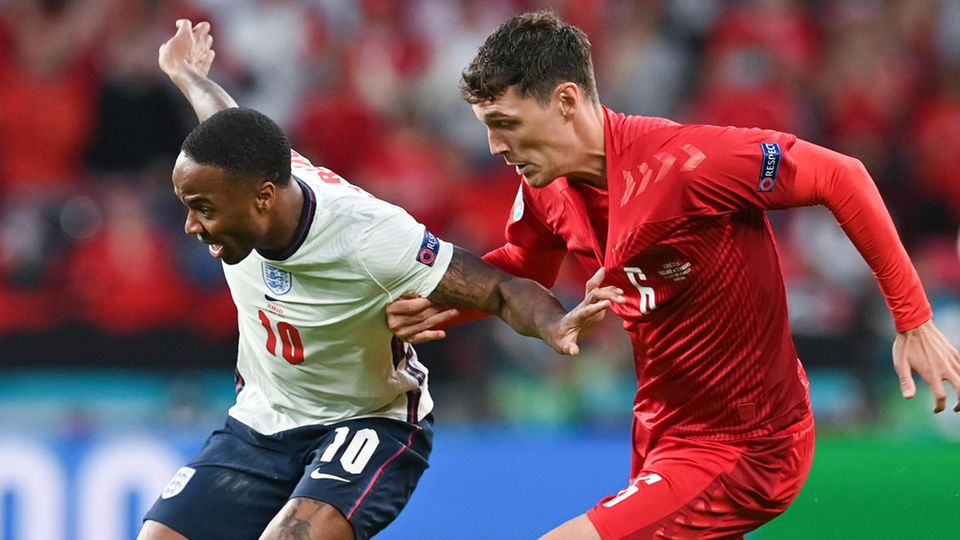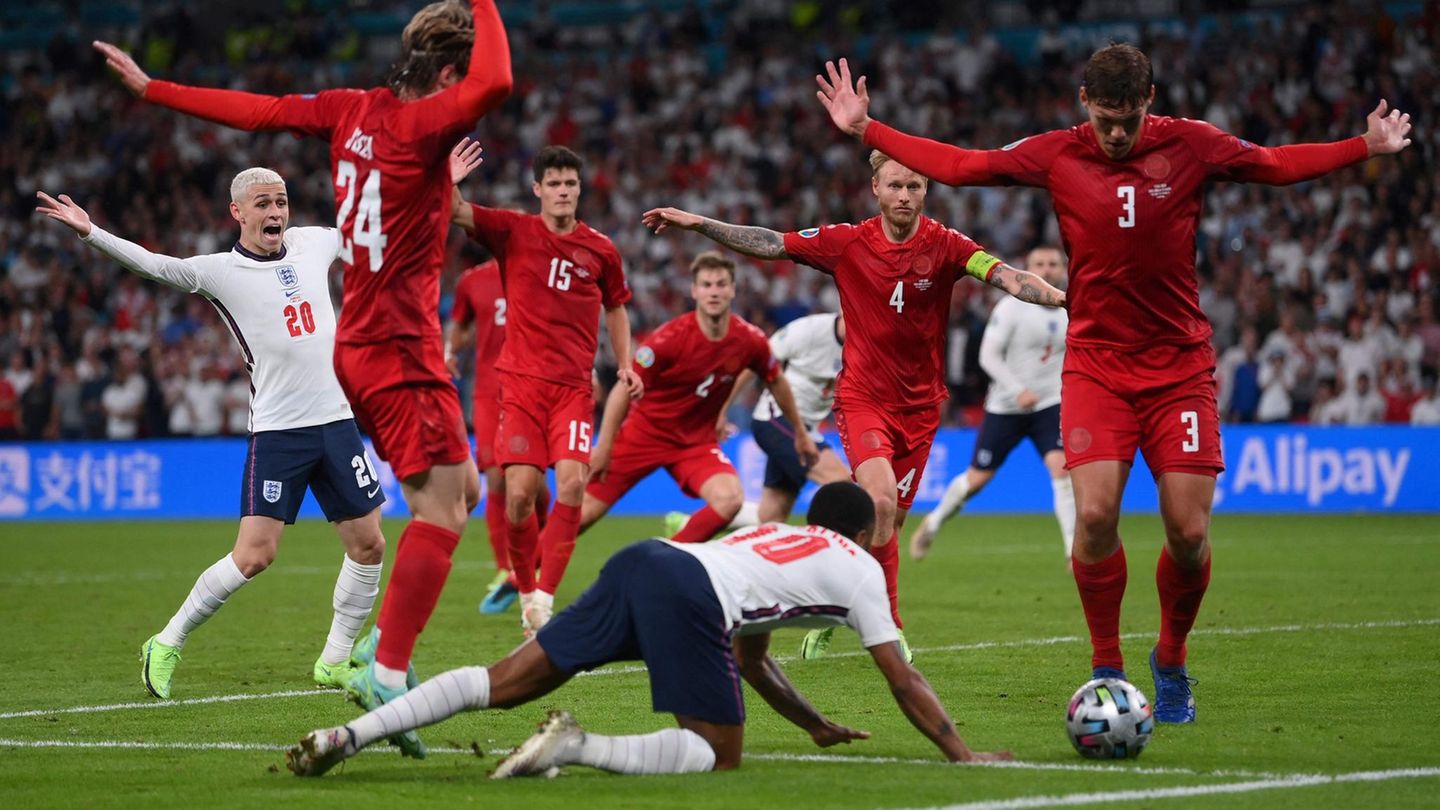The controversial penalty kick in the European Championship semi-finals between England and Denmark has provided the critics of the VAR with new ammunition. It remains very unpopular among football fans.
When the English attacker Raheem Sterling went to the ground in the Danish penalty area in the extension of the European Championship semi-finals, the referee whistled the penalty kick. But the scene is controversial, the VAR video evidence is used – and it supports the decision: foul. What makes the English fans ecstatic is making Danish supporters and many other football fans around the world angry. A penalty whistle that is unjustified in their eyes will be confirmed by the VAR. This proves once again: the VAR is and remains great crap for many.
The technology that is supposed to make football fairer definitely remains highly controversial among many fans and experts. This is confirmed by a survey by the European Football Benchmark 2021. According to this, only 40 percent of the more than 2,600 respondents in Germany are of the opinion that the VAR would make the football game fairer. Likewise, only a minority see the VAR as a way for the referee to better control the game.
VAR is to be broadcast in the stadium
41 percent of those surveyed think that the repetitions of the VAR should be broadcast in the stadium, as this would make the decisions of the referee much more comprehensible. Maybe that would lead to more acceptance. Because as it shows, at least 20 percent of those surveyed consider the VAR’s decisions to be difficult to understand. Likewise, the practical application (implementation) of video evidence during a game remains one of the greatest criticisms. Only 20 percent of the football fans surveyed in Germany consider the way it is used to be successful.

The data in this graph are part of the data available since July 1st. It provides a close-up of clubs, sponsors and fans in 2021 and provides exclusive insights.
I have been working in the news industry for over 6 years, first as a reporter and now as an editor. I have covered politics extensively, and my work has appeared in major newspapers and online news outlets around the world. In addition to my writing, I also contribute regularly to 24 Hours World.




